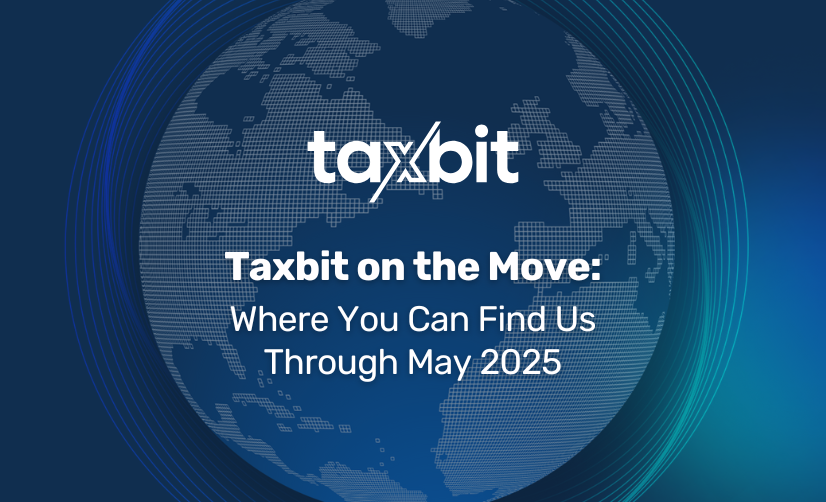Looking back on the challenges faced and looking forward to ensure smooth
DAC7 compliance
With the arrival of DAC7 in 2023, the industry saw digital platforms adopt new processes to comply with this new reporting regime.
This initial phase had a limited scope – only requiring reporting for sellers who onboarded during 2023 – with the intention of easing businesses into the new reporting requirements. Despite the more narrowed focus, this period was critical for digital platforms to identify issues and hurdles, setting the groundwork for future compliance.
At a high-level, platforms were tasked with the following –
- Collect any missing seller data and ensure its accuracy
- Identify the reportable seller population based on requirements and thresholds
- Generate the final, year-end deliverable (i.e., the final XML, and DAC7 Recipient Copies)
- Distribute DAC7 Recipient Copies to sellers
- Complete any required registration and successfully submit XMLs
With the conclusion of this inaugural reporting year, Taxbit can provide unique insight into the key challenges that digital platforms faced, and their impact on the reporting process. And as we turn the page on tax year 2023 and look towards the future, it’s essential for digital platforms to learn from the challenges faced during the inaugural reporting year, and adopt some best practices that can help streamline their internal processes.
Looking Back: Challenges Faced
Reportable Seller Data Collection
One of the most critical challenges that digital platforms face with DAC7 compliance is obtaining and verifying the required information for each reportable seller. This information is not only needed to ultimately generate the recipient copies and final XML, but is critical to identifying which accounts are in-scope for reporting.
The amount of information that digital platforms currently have on file for each reportable seller can vary significantly. Certain platforms had not previously collected any of the relevant DAC7 data fields. Other platforms had some, or even all of the necessary details, but it was dispersed across multiple systems, making it difficult to aggregate into a single database.
While there are different means by which digital platforms can gather this information, one thing remains abundantly clear, especially for those with limited information to-date – it is crucial to set-up a straightforward, standardized collection process. To simplify downstream processes, platforms should also prioritize creating a reliable data management system that covers the entire reportable seller base – one that can be iterated and improved upon, as the industry continues to learn how to best satisfy these new requirements.
Payment Information
Another challenge that digital platforms faced was identifying and aggregating the relevant payment transactions, and appropriately reviewing the final information before reporting. This often proved to be a substantial amount of effort, especially to the extent this was the first time a platform was tasked with compiling this information in such a manner.
For example, platforms struggled to interpret the correct way to break out consideration, fees, and withholding (if any), and properly report these figures in separate fields on the final deliverables. Even after a plan was devised, certain platforms discovered that information was stored across different databases, and they didn’t have a robust ID system to confirm that all relevant data had been exported successfully. Others were dealing with payments made in different currencies, and had to ensure the correct total and currency was reported on the final deliverables. And depending on the type of relevant activity (i.e., the sale of goods), there were also transaction count and amount threshold considerations, in order to exclude casual sellers from the population being reported.
All-in-all, the process of scrubbing internal databases, and organizing the relevant information so that it can be reviewed and analyzed for reporting may seem easy at first glance, but it can quickly snowball into a more painful, time-consuming burden, especially without the proper assistance upfront. Thankfully, platforms that take the time to establish a proper, repeatable process should at least reap the benefits in future reporting periods to come.
Unique Jurisdictional Requirements
Many platforms faced the frustrations that come with researching and understanding local registration and submission requirements. These rules can vary based on the jurisdiction in which DAC7 reporting is being completed, and were especially challenging to navigate for platforms that were reporting across multiple jurisdictions.
For example, registration with a jurisdiction’s local portal is often required to complete DAC7 reporting, which can be a lengthy process that could even require receipt of information via physical mail. Separately, certain jurisdictions have unique and nuanced XML file requirements, which need to be understood, tracked, and adhered to before successful submission can take place.
In many instances, there was little to no publicly available guidance, or if any, it was only available in the local language, creating challenges for US digital platforms that were captured in the scope of DAC7. In absence of guidance, platforms resorted to communicating with the local tax authorities and customer support via email.
In general, these challenges highlight the importance of collaborating with reliable partners – i.e., tax advisers that can point platforms to the correct sources of information, as well as tax reporting software platforms that can quickly iterate upon their functionality to accommodate any nuances in local law.
Looking Forward: Best Practices
Engage Early
Don’t let the reporting deadline dictate your plan for compliance! Platforms that wait until January of 2025 leave themselves at risk of establishing insufficient processes, or missing the reporting deadline altogether. Early and continuous engagement with process definition allows for ample time to identify and resolve potential issues, ensuring that data is collected seamlessly and reporting is performed accurately.
And remember – starting in tax year 2024, digital platforms will be required to collect data and report on all sellers with income activity, widening the scope of reporting from 2023. Without this relief, certain tasks that platforms may have been able to complete manually this year may prove to be more complicated going forward.
Transparency with Sellers
Platforms should prioritize clear communication with sellers about the data required to be collected under DAC7 – this includes educating them on the importance of compliance and how it impacts them. By fostering an environment of transparency, platforms can not only maintain a strong, and trusting relationship with their user base, but also encourage cooperation to make the data collection process more efficient.
Look Out for Additional Guidance
As this new reporting regime matures, platforms should continue to be on the lookout for additional guidance from the OECD, as well as the local tax authority where reporting is being completed!
In preparation for reporting or in response to certain issues faced, many platforms reached out to the local authorities to ask questions. The industry hopes that these tax authorities will take the time to review these questions and respond accordingly to close any noted gaps. As more information becomes available, platforms should do their best to refine their process, and continue to strive toward compliance year-over-year.
The Importance of a Flexible Platform
Digital platforms should ensure they are investing in flexible, scalable compliance solutions that can change and adapt alongside the regulatory landscape. With the right foundation, platforms should be able to build upon their existing processes in order to satisfy new requirements, or expand to new jurisdictions with unique rules.
An End-to-End Solution
Complying with a new regime is a multi-step process that brings forth a substantial operational impact. The more platforms can manage in a single, unified system, the better. This can simplify the review process, help surface specific issues along the way, and provide more insight to a broader group on the status of your compliance, as you approach the reporting deadline.
Taxbit’s DAC7 Compliance Platform
Taxbit launched its DAC7 Compliance Platform to set digital platforms up for success and automate their DAC7 processes. Taxbit’s solution includes collecting all, or any missing seller information, identify the population of reportable sellers, calculating amounts to be reported, and generating the end-of-year jurisdictional-specific XML reports, while giving digital platform operators visibility through the Taxbit platform. The DAC7 solution is an integral component of the broader Taxbit platform, designed to operate standalone, or alongside other key regulatory requirements, like support for the US Forms 1099-K, or Forms W-9/W-8.
By leveraging Taxbit’s unparalleled flexibility and capability, digital platform operators can reduce the burden of manual reporting and mitigate the risk of non-compliance. This not only ensures adherence to tax regulations, but allows operators to focus on their core business activities. Taxbit’s support empowers operators to navigate the complexities of DAC7 efficiently, fostering a compliant digital marketplace, in line with the EU’s goals for tax cooperation and transparency.








